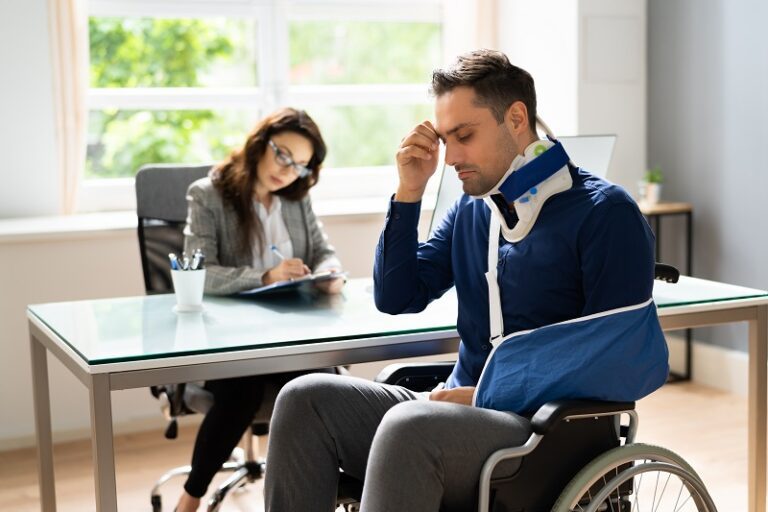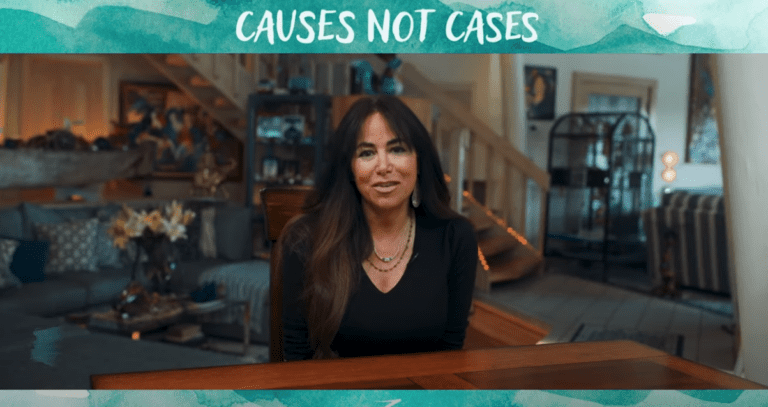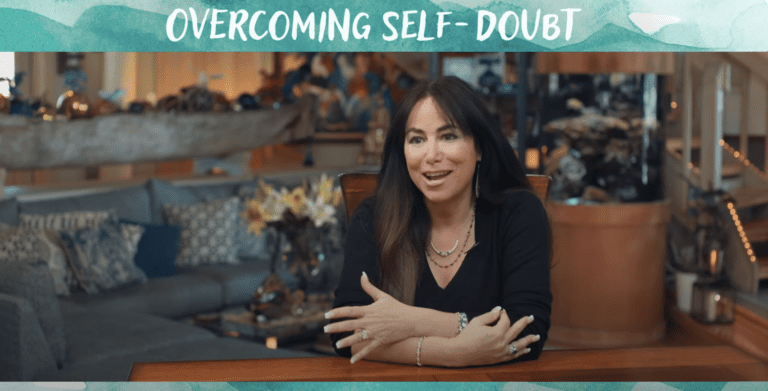Concussions can happen in a matter of seconds, but they can change how we feel, how we function, and how we behave. They are unpredictable, and no two are exactly the same. Statistics show that in California, for those under the age of 65, the rate of concussions per 1,000 patients was 3.5 compared with Connecticut, where the rate was 7.2.
In the United States, nearly three million people every year visit the emergency room for traumatic brain injuries, with 70 percent to 90 percent sustaining so-called mild traumatic brain injuries (mTBI), more commonly known as concussions. Even though concussions are considered mild traumatic brain injuries, they still lead to a wide range of complications, such as seizures, and in some cases, death. Read on to learn more about causes, symptoms, and recovery options from a concussion from the California brain injury attorneys at Gomez Trial Attorneys.
What Is a Concussion?
What is a concussion? From BeyondConcussion.org: The Centers for Disease Control and Prevention (CDC) defines concussion as “a traumatic brain injury (TBI) caused by a bump, blow, or jolt to the head or by a hit to the body that causes the head and brain to move rapidly back and forth.” This abrupt movement can damage brain cells or result in chemical changes in the brain. The injury to the head may be obvious, or there may be no visible injury. A person may not always lose consciousness after a concussion.
Leading Causes of Concussion
The leading causes of TBI (which include concussions) are:
Falls (28 percent). Among all age groups, falls were the most common cause of concussions. More than 8 million people a year go to the emergency room after a fall at home. Many of these individuals are elderly, but anyone can fall. Small children fall on the stairs; adults may trip over a loose rug or fall off a ladder. People who are alone when they fall are especially at risk because there is no one there to recognize the signs of a concussion or seek medical attention. Many falls also occur on a job site or while performing work duties.
Motor vehicle crashes (20 percent). Motor vehicle accidents were the leading cause of TBI-related hospitalizations for teenagers and adults from ages 15 to 44. The force of a car accident may involve sudden movement or violent shaking of the head or upper body, being ejected from the vehicle and hitting the pavement, or hitting the head against a window or some other part of the car.
Being struck by or colliding with an object (19 percent). According to the San Diego Brain Injury Foundation, more than 22 percent of TBI-related emergency department visits, hospitalizations, and deaths in children less than 15 years of age were caused by being struck by or against an object. In general, among children and teens, sports or recreational activities often cause concussions. Injuries often happen while riding a bike, engaging in playground activities or participating in football, basketball, and soccer. Many concussions are sports-related. An estimated 1.6 to 3.8 million sports and recreation related concussions occur in the United States each year.
Football accounts for more than 60 percent of these. In high school sports, football is the leading cause for males and soccer is the leading high school sports concussion for females. Injured players sometimes hesitate to report symptoms, but it is essential to remove an injured player and not allow them to return too soon to prevent further injury to the brain.
Assaults (11 percent). These may involve fights in which a person is hit in the head, muggings or gunshot wounds, or other violent altercations. Domestic violence also leads to many concussions and other brain injuries. Unfortunately, many of these incidents go unreported and the victims may go untreated.
Concussions and military service. Many veterans are dealing with TBI sustained while serving in the military. Since October 2001, more than 1.6 million American military service members have deployed to Iraq and Afghanistan. Between 5 percent and 35 percent of them have sustained a concussion, also called mild traumatic brain injury during their deployment. Up to 80 percent of the concussions experienced in military service are secondary to blast exposures.
Concussions suffered by members of the military are particularly challenging. There is a certain amount of overlap between the symptoms of stress and the symptoms of mild TBI, such as fatigue, anxiety, problems sleeping, inability to multitask and irritability. Sometimes the symptoms are treated as a brain injury and sometimes as a mental health issue. Often, when the injury occurred some time ago, it can be difficult to know what treatment is necessary.
Signs and Symptoms of Concussion
It can be easy to overlook or ignore the signs of concussion. There may not be an obvious injury on the outside of your head, or the symptoms may not become apparent until later. Some concussions cause you to lose consciousness, but many do not. Therefore, you may have a concussion and not realize it, so it is important to be aware of the signs and symptoms of a concussion. These include:
Thinking and remembering
- Difficulty thinking clearly or remembering
- Feeling confused or disoriented
- Difficulty concentrating
Physical
- Temporary loss of consciousness
- Headaches
- Blurred vision, or ringing in the ears
- Slurred speech
- Nausea or vomiting
- Dizziness
- Sensitivity to light or sounds
- Balance problems
- Tired or lethargic
Emotional
- Irritability
- Sadness
- More emotional
- Nervousness/anxiety
Sleep
- Sleeping either more or less than usual
- Difficulty falling asleep or staying asleep
Diagnosis
When assessing a possible head injury, most doctors start with the Glasgow Coma Scale, a scoring system frequently used to describe the level of consciousness in a person after a suspected brain injury. However, great caution should be used with this tool, as it only describes the level of conciousness in the acute setting and does not indicate symptoms which may develop later. The purpose of the glasgow coma scale is specifically to look for life-threatening symptoms.
Patients may also undergo a CT scan of the head to detect intracranial lesions. A recently developed test, known as Banyan BTI (Brain Trauma Indicator), measures protein biomarkers that are released from the brain into blood within twelve hours of head injury. This test gives medical providers a valuable new tool to assess potential concussions. It also may reduce the number of CT scans performed on patients with mild traumatic brain injury.
In addition to other risks associated with concussions, new research suggests that there may be a connection between mild brain injuries and the risk of developing Parkinson’s disease and dementia. In two recent studies, researchers at UC San Francisco concluded that even a single concussion was associated with an increased risk of developing Parkinson’s disease and dementia in the future. They found that the risk of dementia is 3.77 times higher after a moderate to severe trauma, no matter when it happened during the victim’s life. Even without the loss of consciousness, a mild concussion increased the risk by 2.51 times.
In addition, a study of deceased former NFL players found that over 99 percent had permanent brain damage. Of the 111 players whose brains were examined, 110 showed evidence of chronic traumatic encephalopathy (CTE), a degenerative brain disease. The symptoms of CTE may not appear for many years after the injury.
Recovery
Every concussion is different, so the symptoms and recovery time will vary, not only from person to person, but also from one concussion to another. Approximately 20 percent of concussion patients will experience symptoms of post-concussion syndrome, in which their symptoms persist.
You should always attempt to see a physician after any type of brain injury, and you should do your best to follow the doctor’s instructions. Doctors may recommend during the acute phase, immediately following a concussion, 24 to 72 hours of rest. In addition, a person who has suffered a concussion should not be left alone during the first 48 hours and people should not take any medication without checking with a doctor. During this acute phase, the injured person should cut back on all activities, including work, school, and daily chores.
After this acute phase, people can slowly begin to return to their normal lives. They should check with their doctor before driving a car, returning to work, participate in sports or recreational activities, travel in an airplane, drink alcohol, or make important decisions. If symptoms do not subside after several weeks, the injured person should seek medical advice to check for post-concussion syndrome.
Experts debate concussion recovery for athletes because repeated concussions can be dangerous. Some medical professionals recommend that an injured athlete wait about a week before returning to playing sports. However, full recovery from concussion is estimated at 29.4 days. California, like most states, has passed legislation aimed at reducing the risk of youth sports-related concussions.
If a school district offers athletic programs, it must remove an athlete from play who is suspected of sustaining a concussion or other head injury. The athlete must be evaluated and receive a written clearance from a licensed health care provider before returning to play. The law requires an annual related information sheet to be signed and returned by the athlete and his or her parent or guardian before practice or participation.
Pursuing Legal Action for a Concussion
If someone else was at fault for the injury that caused your concussion, you may be entitled to compensation. Medical treatment for concussions and any complications may be ongoing and very costly. Some people recover from a concussion fairly quickly, but for others, the physical pain and emotional devastation can continue for a long time.
It is hard to know how your concussion will affect your life. You will probably face medical bills and possibly lost wages. What’s more difficult is predicting future medical costs or lost wages or job opportunities. Also, there is the cost of your quality of life, which may be greatly diminished by the concussion.
Damages may include both economic and non-economic losses. They may include:
- Medical expenses. Keep records for every medical treatment you receive, your total costs, and your medications.
- Costs of home care, or domestic services in the event of serious injury.
- Lost wages and diminished earning capacity.
- Costs associated with repairing or replacing damaged property
- Pain and suffering
- Loss of companionship/consortium
- Psychological and emotional distress.
Punitive damages are an additional form of compensation. They are intended to punish a responsible party for malicious, outrageous, or grossly negligent conduct.
Unlike some states, there is no cap in California on damages for pain and suffering, except in medical malpractice cases.
Prompt medical treatment is extremely important. Not only will it improve your chances for recovery, but if you fail to get treatment right away, the other party may claim that your failure to act made your condition worse, relieving them from liability.
The Effect of a Concussion on Families

People may brush off a concussion for a variety of reasons. But any traumatic brain injury, even a mild one, can have a lasting impact on families as well as patients. Someone who suffers a concussion may face a wide range of physical, cognitive, and psychological symptoms. The injured person may become anxious, angry, or depressed.
Young people may struggle to return to school or even do homework. Because the developing brain is generally more pliable than the mature brain, experts believed that a younger age at the time of injury would have a beneficial effect on recovery and expected outcome. However, current information indicates that this is not the case; the developing brain may, in fact, be more vulnerable to brain injury.
Changes in emotions and behavior may be viewed with dismay by family members as a personality change, and disrupt personal relationships, making it difficult for the patient to adjust to family life. The injured person may also face challenges doing everyday tasks, such as making decisions, driving or balancing a checkbook. These symptoms may delay an individual’s return to work. If the injured person was a key member in the functioning of the household, the ongoing problems affect the whole family. The financial costs associated with a brain injury may be disastrous for a family.
If you or a loved one has suffered a concussion, an experienced brain injury attorney can help you understand your options.







